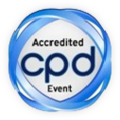
Filip B. Harasimiuk
West Poleranian University of Technology in Szczecin, Poland
Title: The use of selected strains of microalgae to rapidly reduce nutrient pollutants in industrial wastewater
Biography
Biography: Filip B. Harasimiuk
Abstract
Treatment of wastewater from industry creates serious technical and technological problems. The direct method is related to the fact that most of the waste water is characterized by a non-uniform composition, high concentrations of organic compounds and the content of specific substances. Additionally wastewater may also be characterized by the presence of simple phosphates and organic phosphorus. A perfect example of such contaminants are effluent from fish farming. Because of the potential negative impact of the plant on natural systems, it is necessary standardization allowable concentrations of pollutants in waste water emitted. The organic phosphorus compounds are a major problem in the purification of this kind of treatment, as they are difficult to remove. Same because conventional methods of disposal of sewage are not always effective. So far the problem has not been completely solved and the technology their rapid removal from wastewater has not been developed. Therefore fully reasonable to searching for new methods of removal of phosphorus from waste water from fish farming. The aim of the study was to determine the applicability of microalgae Monoraphidium controtum reductions of organic forms of phosphorus from waste water from closed circuit farming (RAS). The presented results indicate that, during seven days of the process it is possible to remove about 30% organic phosphorus. At the same time it has been observed increase in biomass microalgae determined from measurements of chlorophyll "a" of at ok.1700%. Analyzing the results of the above it can be concluded that the solution proposed in the study can be competitive solution for traditional methods of sewage treatment with loads of phosphorus technology currently used.

